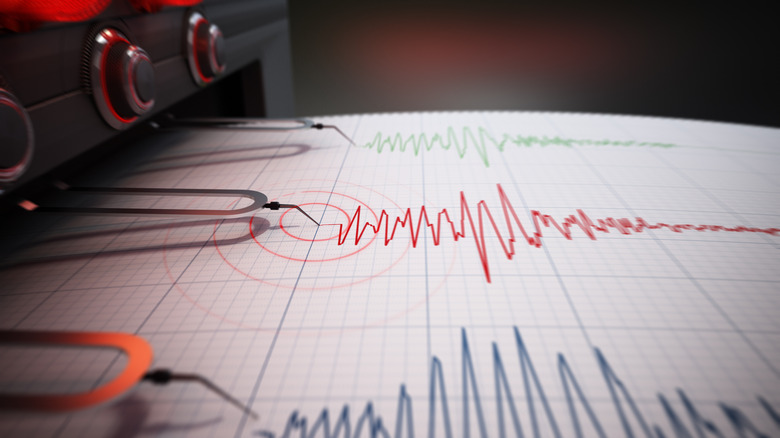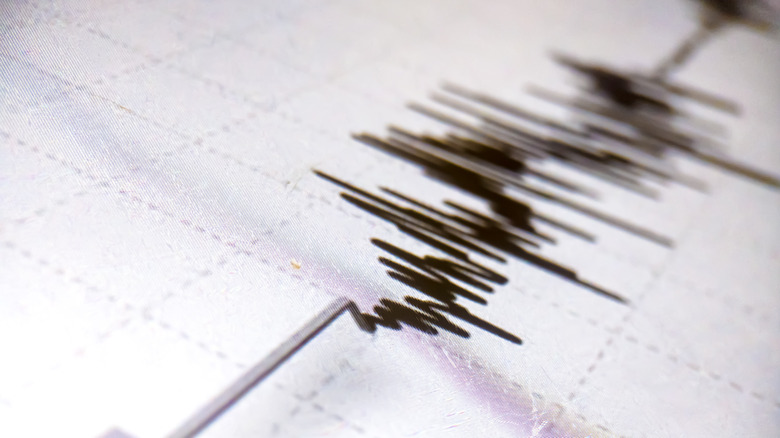How To Check If There Was Just An Earthquake Near You (And How They're Measured)
An earthquake just occurred near Whitehouse Station, New Jersey, according to the U.S. Geological Survey (U.S.G.S.) and it was felt in many nearby and neighboring states like New York and Pennsylvania. It was reportedly of a magnitude 4.8. Taiwan's disastrous earthquake on April 3 was initially measured as a magnitude 7.4, with aftershocks clocking in at a magnitude 6.4.
Although states like New Jersey aren't particularly prone to experiencing earthquakes — as opposed to states like California and other areas that surround the Pacific Ocean — earthquakes in general are fairly common across the world. In fact, at least nine significant earthquakes and aftershocks have occurred across the world since March 14th, according to data provided by the U.S.G.S.
If you ever feel something that might be an earthquake, chances are others felt it too and reported it to the U.S.G.S. Additionally, seismometers (instruments used to measure seismic activity) much more sensitive than humans have likely picked it up, which makes the U.S.G.S. the first place you should check with if you are curious about whether you just experienced a geologic event. The U.S.G.S. website posts information about every seismic event (including volcano eruptions and landslides) across the world as it happens, along with maps of the exact area affected.
The magnitude scale
As mentioned earlier, earthquakes are measured on the magnitude scale. The scale measures from one to over 10 and covers the size of seismic events through data collected by seismometers. According to the scale, a magnitude 1 quake would be almost imperceptible, while a magnitude 10 or greater would cause massive destruction in the surrounding area. The scale is also logarithmic meaning "each whole number increase in magnitude represents a tenfold increase in measured amplitude as measured on a seismogram," per the U.S.G.S.
You may have heard of the Richter scale, developed by American seismologist Charles Richter, being used to measure earthquakes. That scale has been phased out in favor of the magnitude scale, which takes into account data such as the depth of the actual earthquake to give a more accurate measurement. Fortunately, the science of reporting and recording earthquakes and other similar natural disasters and events is always developing to not only understand the events better, but hopefully prepare better in the future.

